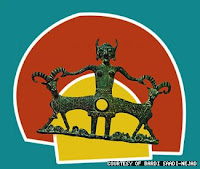 By Barbara Black, "Iranian studies launched with a minor" - Concordia Journal - Montreal, Quebec, Canada
By Barbara Black, "Iranian studies launched with a minor" - Concordia Journal - Montreal, Quebec, CanadaThursday, April 3, 2008
Concordia is developing a program in Iranian studies, starting with an undergraduate minor that is listed in the 2008-09 undergraduate calendar.
Its organizers intend that this initiative, which is unique in Canada, will grow into a full-fledged major program.
Professors Richard Foltz and Lynda Clarke want to establish Concordia as the premier centre for Iranian studies in Canada, making use of Montreal as a crossroads of Iranian immigration for the benefit of the community at large.
Although the minor is based in the Department of Religion, it is interdisciplinary, including anthropology, political science, gender studies, history and film. Students can choose from a wide range of courses.
Besides Islamists Lynda Clarke and Richard Foltz, the core faculty comprises linguist Mark Hale, sociologist Homa Hoodfar and Peter Rist, an expert on Iranian film. Also associated are classicist Annette Teffeteller and political scientist James Devine, a specialist in contemporary Iranian and Gulf politics.
(Foltz explained, “We realized that a lot of our students are interested in Iran and chose Concordia because we have a lot of Iranists [in the Department of Religion]. We decided to develop this into a strategic plan, to formalize what we are already doing.”
While Islam is an increasingly popular field of study in North America, Iranian studies has a very faint presence; there are only two active programs at U.S. universities. Pre-Islamic Persia was an astonishingly rich culture whose influence rivals that of ancient Greece.
Foltz, who has a PhD from Harvard, has just published a book called Iran creuset de religion (Iran, The Crucible of Religion), published by Laval University Press. In this and a previous book, Religions of the Silk Road (St. Martin’s Press, 1999), he traces the emergence, development and transmission of the world’s major religious traditions.
Clarke said Concordia’s Iranian studies initiative was inspired by the success of Centre for Canadian Irish Studies, which has used local community support and a stream of visiting speakers, scholars and organized events to build a highly visible interdisciplinary centre.
In fact, there are surprising affinities between Iran and Ireland, both local and historical. Both ethnic communities have a strong presence in Montreal and at Concordia, thanks to waves of immigration — in Ireland’s case, in the mid-19th century, in Iran’s, much more recently. Montreal now has about 16,000 citizens of Iranian descent, and Concordia’s Iranian Students Association is a very active organization.
There are historical connections, too, although they reach far back. “Iran” and “Eire,” the Celtic name for Ireland, have the same etymological root. Both peoples, among many others, can be traced to Indo-European roots. Iranians are not Arabs, and their language is Farsi, or Persian, not Arabic.
Iran-related research and teaching at Concordia reflects the extraordinarily broad impact of Iranian civilization on the world’s diverse cultures, from the Balkans to China and India over a span of some 3,000 years.
“Iranian civilization is much broader than Islam,” Clarke said.
The Concordia program will draw on the expertise of specialists in the Persian language, ancient Iranian languages, mythology and art. The organizers hope to raise sufficient funds to add specialists in Persian literature, history, art and architecture.
In the Department of Religion alone, Umberto Cicchetti, Eliza Tasbihi, Khadijeh Zolghadr and Linda Darwish are doing doctorates in Iranian studies with an emphasis on religion. Many other graduate students with Iranian interest are at work as well.
Tasbihi has just finished an MA on Iranian Islamic theosophy, and is presently working on Rumi, the highly popular 13th-century Sufi “poet of love.”
Cicchetti, a native-born Quebecer with no Iranian background, is doing a thesis on dream interpretation in Sufism. In fact, he is in Iran now.
He is one of many students the Department of Religion has helped to travel to Iran to study Persian and otherwise further his studies, the latest being a student in the School of Cinema, who is writing a thesis on Iranian film.
[Picture: This bronze statue from Luristan, in western Iran, dates from the 12th to the eighth century BCE. Photo: Courtesy of Bardi Saadi-Nejad].





No comments:
Post a Comment